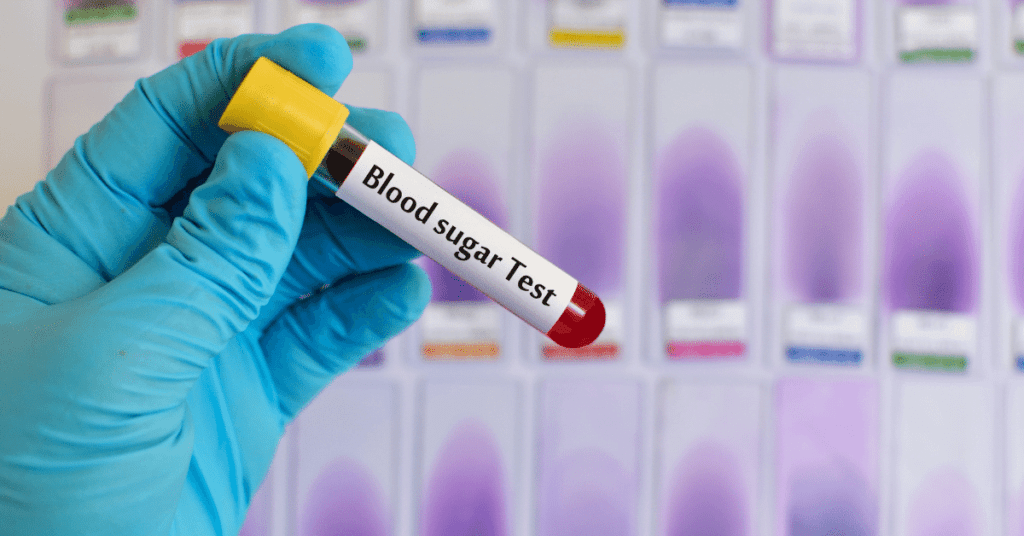Contents
What Is A Blood Sugar Test?
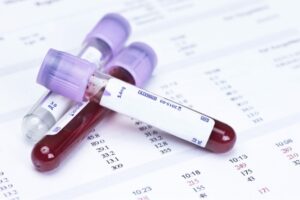 A blood sugar test is a medical procedure that measures the level of glucose (sugar) in your blood. Glucose is a type of sugar that your body uses for energy and other important functions, such as making proteins.
A blood sugar test is a medical procedure that measures the level of glucose (sugar) in your blood. Glucose is a type of sugar that your body uses for energy and other important functions, such as making proteins.
The glucose level in your blood provides important information about your diabetes management. It can also help diagnose other conditions, such as hypoglycemia (low blood sugar), hyperglycemia (high blood sugar), and pancreatitis (inflammation of the pancreas).
There are many types of blood sugar tests. Some tests simply show your current blood sugar level. Other tests show how well the body is handling glucose by measuring a process known as glycoheamoglobin (HbA1c).
What To Expect During The Test?
A blood sugar test is a simple yet effective way to diagnose diabetes. Diabetes can be diagnosed with the help of a blood sugar test. This involves the analysis of the level of glucose in your blood. There are two types of diabetes type 1 diabetes and type 2 diabetes. Type 2 diabetes is most common among adults aged 20-40 years. Whereas type 1 diabetes is often diagnosed in children or teenagers. With the help of this article, you will know what you ought to do if you have high levels of glucose in your blood.
The normal range for a fasting blood sugar test is between 70mg/dL and 99mg/dL. If your level exceeds that, then there’s a good chance that you have diabetes.
Hyperglycemia or high blood sugar can lead to many complications including diabetic coma. It is usually brought about by a lack of food intake for three days. Symptoms may vary but these are some of the common ones- intense thirst, frequent urination, dry mouth, nausea, and vomiting, etc.
The first step to treating hyperglycemia is by changing your dietary habits. So that there’s a decrease in the level of glucose in the blood. This can be done by reducing or cutting off the intake of sweets and sugar. The next thing you need to do is control your weight since being overweight increases the chances of developing diabetes.
If these measures still do not seem to work, then you need to take insulin injections. With these things in mind, it is important that you get a blood sugar test done if ever you feel like something’s wrong with your health. You can also ask someone else to get tested or if that’s not possible then request the assistance of your primary care physician.
Preparation For A Blood Sugar Test
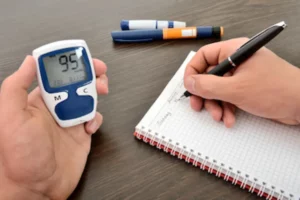 There’s usually no special preparation needed before a blood sugar test. However, if your doctor orders a fasting glucose test, you’ll need to go without eating for at least eight hours before the test.
There’s usually no special preparation needed before a blood sugar test. However, if your doctor orders a fasting glucose test, you’ll need to go without eating for at least eight hours before the test.
A healthcare provider will use a lancet (sharp-pointed needle) or fingerstick to collect drops of blood from your fingertip, an arm vein, or a site on your lower abdomen. You may feel a quick sting or pinch as the lancet runs over your fingertip, arm, or belly. If you have diabetes, the test is part of your routine care and will likely be done at your doctor’s office. Tell your doctor about any current health conditions and if you have any allergies before having a blood sugar test. Also, inform your doctor about any medications you’re currently taking because of certain prescriptions. And over-the-counter medicines may cause false test results.
Blood sugar tests are done while you’re fasting if you’re having a glucose challenge test. For other blood sugar tests, you’ll need to follow certain instructions before the test:
- Don’t eat any solid food for 8 hours before your appointment time if you’re having a fasting test.
- Stop taking medicines that affect how the test results turn out at least 24 hours before your appointments. Such as birth control pills and glucocorticoids (steroid hormones that are used to treat many conditions, including arthritis, asthma, and cancer).
- Stop taking medicines that lower blood sugar levels at least 24 hours before your appointment if you’re having an oral glucose tolerance test.
There is no special preparation required for a fingerstick or venous blood draw.
What Happens After A Blood Sugar Test?

After a finger prick, you can put pressure on the site to stop any bleeding and apply a bandage if necessary. If the lancet used was from a device that automatically inserts a new lancet into the machine after each use, no further action is needed.
If you had to hold a gauze pad against your finger to stop the bleeding, changing it as directed by your doctor or nurse is all that’s usually necessary after the test. However, if you used a bandage, change it as directed by your doctor or nurse.
As with other blood tests, if you were told to avoid certain foods or medicines before your test. You’ll need to follow these directions as indicated by your doctor. Don’t eat any solid food until after the fasting glucose (blood sugar) test and don’t drink anything with calories for 8 hours before the test.
If you had an oral glucose tolerance test, plan on having it done in a healthcare provider’s office or a lab. You’ll need to stop taking medicines that may affect the test. Such as birth control pills and diabetes medications, at least 24 hours before your appointment time. There is no fasting required for this test.
Blood sugar tests may be done when you’re sick if your diabetes management has been changed because of illness. These tests can show whether your blood glucose level is too high or low. The results help your doctor decide what medication you need to get well.
There are many situations in which you’ll need to check your blood sugar level. Your doctor might do the test at regular checkups or when you have symptoms of high or low blood glucose levels. Such as feeling shaky, confused, faint, weak, flushed, sweaty, nauseated, or extremely hungry.
What If I Have More Than Normal Blood Sugar Levels?
High blood sugar can lead to many complications including diabetic coma. If your fasting blood sugar is over 70 mg/dL, you should do the following:
- Change your dietary habits by reducing or cutting off the intake of sweets and sugar;
- Control your weight as obesity increases your chances of developing diabetes; and – if these measures don’t work, then take insulin injections.
With this list in mind, it is important that you always get a blood sugar test done. Especially if you ever feel like something’s wrong with your health. You can also ask someone else to get tested or request assistance from your primary care physician.
Ways To Test Blood Sugar
Blood sugar tests also are done when diabetes medications don’t seem to be working the way they should when you start a new diabetes treatment plan. And when your blood sugars are too high for comfort. Blood sugar tests help monitor how much insulin you need, how your diabetes treatment plan may need to be changed over time. The success of certain surgeries you’ve had, and whether you’re at risk for serious complications. During the test, blood sugar levels are measured by pricking a fingertip or using an instrument that inserts into the skin to draw out drops of blood. The lancet device pierces the surface of the skin and blood collects in a tiny glass tube that’s touched to a reagent strip containing chemicals that react with blood samples. The test result appears within minutes on a digital monitor.
These tests are done using an instrument that uses a drop of blood from a fingertip or by inserting a needle through the skin to withdraw fluid from a vein.
Oral Glucose Tolerance Test
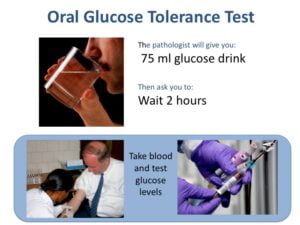
This blood sugar test measures the level of glucose in the person’s blood after the ingestion of a fixed amount of sugar. The person will then be asked to wait and then return and provide their blood sample for analysis. For this blood sugar test, there are no additional costs.
Finger Prick
This is a simple process that can be done at home to measure the levels of glucose in the person’s body. A needle is inserted into the side of the index finger and three drops of blood are collected from one portion of the skin. The blood samples should be taken at times before and after eating to get an accurate test result.
Meters That Test Other Sites
These are also simple methods to check for blood sugar levels. The skin is numbed with an anesthetic before pricking the area of choice. such as your upper arm, forearm, the base of the thumb, and thigh. You may get varying results than if your finger was used. Blood sugar levels in the fingertips change more quickly than those at other testing sites. Especially when blood sugar levels are rapidly fluctuating, such as after a meal or during exercise.
Blood Sample
For this method, a test tube will be required to collect the person’s blood samples. It is important that these are collected at certain time intervals to get accurate results. There is however a cost for sending these samples to a lab and analyzing them.
Home Blood Glucose Monitoring
If you want to know the effects of your diet on your blood sugar levels. It’s easy to monitor them with a few simple steps. Test your fasting blood sugar by using a glucometer before an 8-hour fast and again after the 8- hour period has passed. You can have a post-meal “peak” reading by testing your blood sugar about one hour after eating a meal that contains carbohydrates.
HbA1c
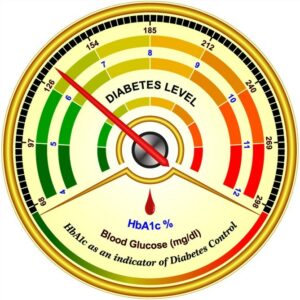
HbA1c is a measure of the amount of “hemoglobin A” in your blood. It has been used as an indicator of long-term blood sugar control. It can be used to help diagnose diabetes and problems with insulin function. HbA1c levels are usually highest during the morning, but they can stay higher or decrease throughout the day depending on recent consumption of medications, exercise, or food.
What Does A Blood Sugar Test Determine?
The best time to perform a blood sugar test is when your doctor tells you to. That way, they can see if your blood sugar levels are in the normal range, and if not, what the cause of that abnormality might be. For example, you should schedule a blood sugar test after eating if you’re on medication for diabetes.
A blood sugar test is often done to determine whether you have diabetes or if your body can still produce enough insulin. Depending on what you mean by a “blood sugar test,” there are a number of tests that may be necessary. For example, a fasting glucose test would require going without food for at least eight hours prior to the test.
Blood sugar tests are usually done to help detect diabetes. Blood glucose levels can also be tested to monitor treatment, provide evidence of ketosis which may indicate if you are starving to death, determine the severity of a hyperglycemic condition, and determine whether someone has hypoglycemia.
Diagnosing Diabetes
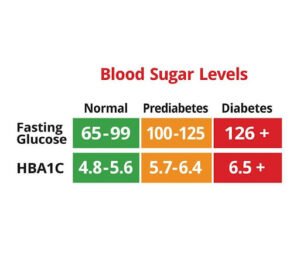
A fasting plasma glucose test is usually the first step in diagnosing hyperglycemia. This can be done by measuring the amount of glucose in your blood, determining whether ketones are present in your urine. And by obtaining a measurement of the amount of glucose in your cerebrospinal fluid. If you suspect that you have diabetes or if your body can still produce enough insulin.
Monitoring Treatment
If your doctor prescribes medicines such as insulin, testing blood sugar levels can help determine whether you need higher dosages of the medicine and/or if you’re taking it at the right time.
Diagnosing Ketosis
One important function of insulin is to lower levels of blood glucose. In starvation, when the body can’t produce enough insulin for this purpose, blood sugar remains high and the body begins breaking down fat for fuel. High levels of ketones in the urine indicate that a person has gone into a state of ketosis.
Determining Severity Of Hyperglycemia
If you suspect that you have hyperglycemia, but are uncertain whether it’s serious enough to need treatment. Your doctor may order a test known as an A1C. Since this test measures blood sugar over a three-month period. It will give your doctor a more accurate idea of your average blood sugar levels than a fasting glucose test would.
Diagnosing Hypoglycemia
A doctor will order a blood sugar test if they suspect that you have hypoglycemia (low blood sugar). This can be done by measuring the amount of glucose in your blood, determining whether ketones are present in your urine, and/or by obtaining a measurement of the amount of glucose in your cerebrospinal fluid.
If you don’t have diabetes but are experiencing symptoms that your doctor thinks may indicate that you have a blood sugar problem. You might need to go somewhere else for your test. For example, if you’re having symptoms of low blood sugar (hypoglycemia). Such as shakiness, confusion, or hunger, the doctor might send you to an emergency department. So that he or she can find out whether your blood sugar is very low.
A blood sugar test is an important tool for many medical professionals. It provides information on the severity of hyperglycemia or hypoglycemia. It’s easy to monitor them with this simple process. For this perform fasting tests before 8-hour fasts and after 8 hours have passed. Then perform post-meal “peak” reading one hour following meals containing carbohydrates. And measure HbA1c levels (highest during mornings) depending on recent consumption of medications.
Conclusion
Diabetes is a disease that increases our blood sugar levels. Doctors advise diabetics to monitor their blood sugar tests at regular intervals of time. So that they can control their blood sugar levels well. There are many types of blood sugar tests. If you are confused about them or need any help in managing diabetes. Feel free to call our team and let us help you.
Do you want to get rid of diabetes? Join our online diabetes consultation program and reverse your Diabetes naturally through lifestyle changes such as a Personalized Diet plan, Exercise, dieticians, and health coaches.
